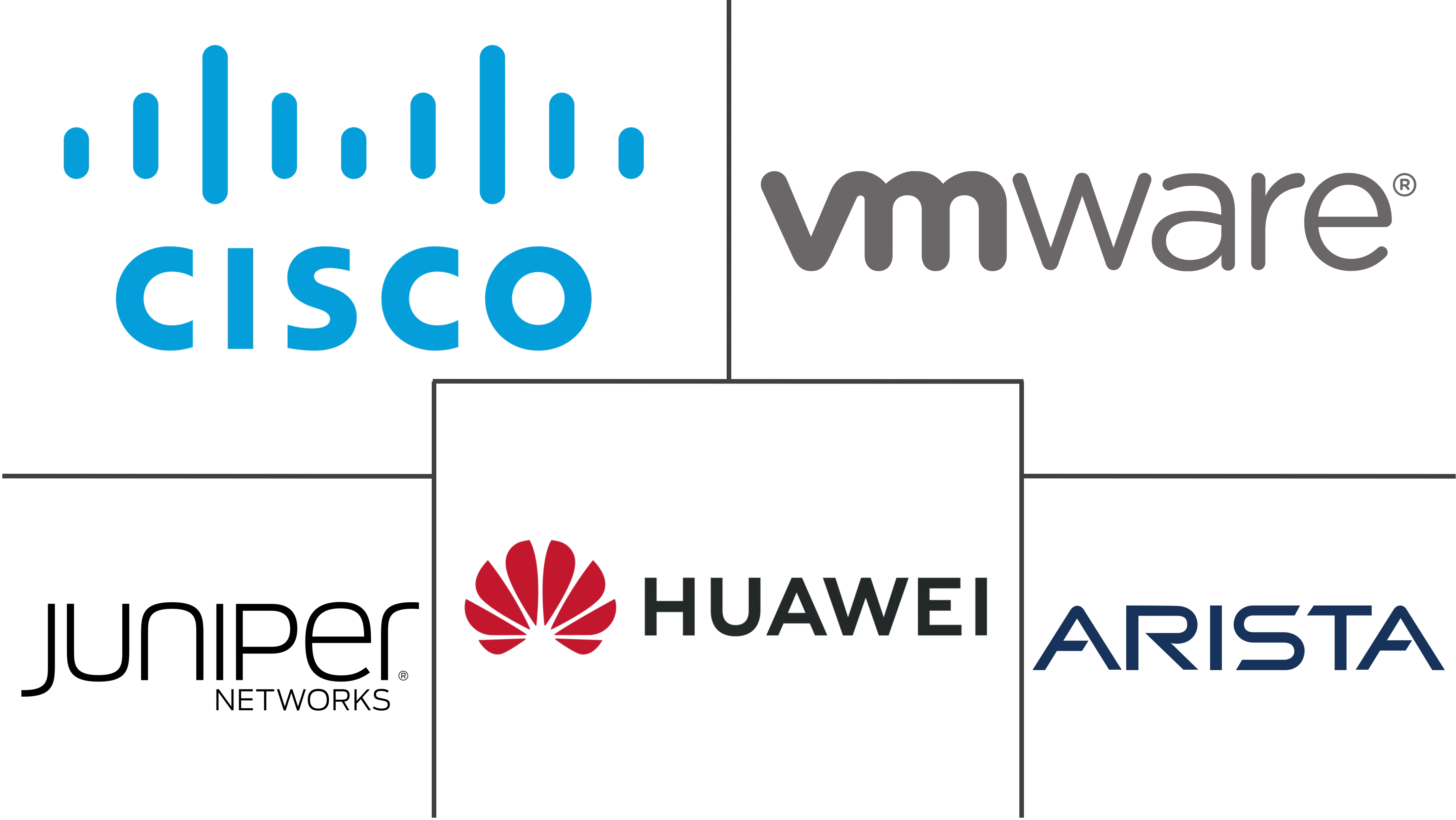South Korea Data Center Networking Market Size and Share
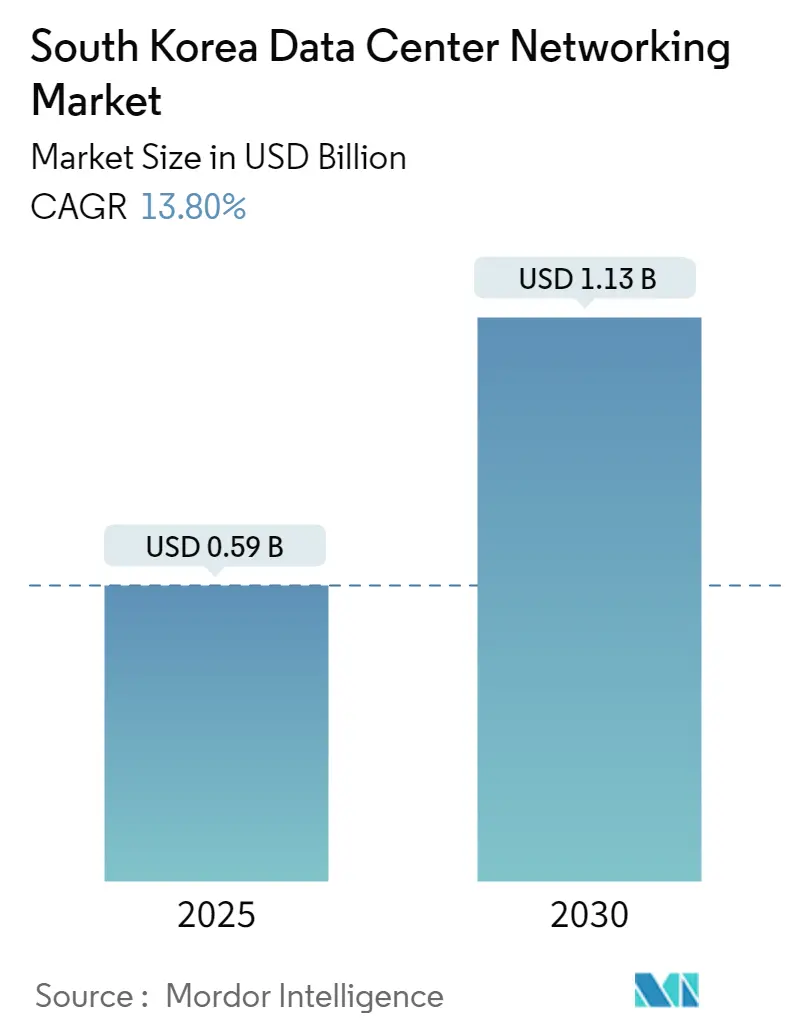
South Korea Data Center Networking Market Analysis by Mordor Intelligence
The South Korea Data Center Networking Market size is estimated at USD 0.59 billion in 2025, and is expected to reach USD 1.13 billion by 2030, at a CAGR of 13.8% during the forecast period (2025-2030).
- As one of the key objectives, South Korea's K-Network 2030 strategy aims to strengthen and upgrade the country's network infrastructure while developing energy-efficient and fail-proof systems. South Korea has set the goal of doubling its optical communication speed by 2026 and quadrupling it by 2030.
- Meanwhile, it will also boost the country's submarine cable transmission capacity. South Korea aims to raise the packet optical transport network (POTN) speed from 100Gbps at present to 200Gbps by 2026 and 400Gbps by 2030 while largely boosting the transmission capacity. Such a factor caters to positive market growth.
- Under Construction IT Load Capacity: The upcoming IT load capacity of the South Korean data center market is expected to reach 2K MW by 2029.
- Under Construction Raised Floor Space: The country's construction of raised floor area is expected to increase to 5.7 million sq. ft by 2029.
- Planned Racks: The country's total number of racks to be installed is expected to reach 285,816 units by 2029. Greater Seoul is expected to house the maximum number of racks in the coming years.
- Planned Submarine Cables: There are close to 11 submarine cable systems connecting South Korea, and many are under construction. One such submarine cable that is estimated to start service in 2025 is Bridge One, which stretches over 330 Kilometers with landing points from Pohang, South Korea.
South Korea Data Center Networking Market Trends and Insights
BFSI to Hold Significant Market Share
- The average financial institution requires a constellation of services, capabilities, and security policies to carry out daily business. Managed IT services assist with each of these by implementing best practices overseen by experienced professionals to optimize the network.
- In the banking, financial services, and insurance (BFSI) sector, SDN can meet the demands of next-generation technologies through a network that provides flexibility, agility, security, and surrender in the service of a genuinely customer-first experience.
- South Korea has an advanced and profitable financial services sector, including Asia's third-largest insurance and banking markets. Strong fundamentals and aggressive regulations underpin the banking sector's stability.
- The government has also announced its plans to turn Seoul into a “fintech test bed," which could further boost the demand for data center networking from the BFSI segment. Korean banks are preparing for digitization by accelerating the closure of their branches nationwide. This move also aims to cut fixed costs to free up money to invest in growing digital businesses. Currently, only fewer people visit branches due to the growing popularity of mobile banking platforms. Such trends may drive the demand for data centers and networking solutions from the BFSI segment in the coming years.
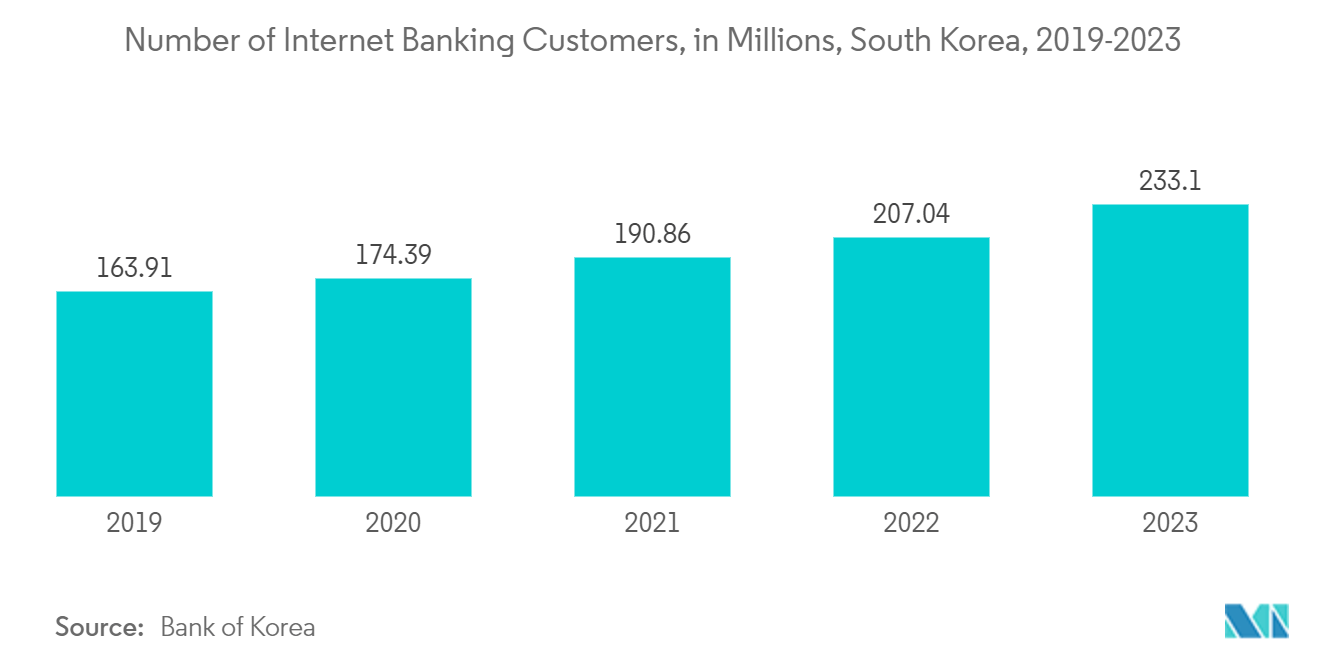
Application Delivery Controller to Hold Major Market Growth
- The application delivery controllers primarily provide security and access to the applications at peak times. As computing is moving toward the cloud, software ADCs have been performing tasks that have been traditionally performed by custom-built hardware. They also offer additional functionalities and flexibility for application deployment.
- Additionally, with the increase in distributed denial-of-service (DDoS) attacks disrupting enterprise servers, companies can also rely upon ADCs to set limits on requests and traffic hitting a single internal server resource. In Seoul, as per the government, the number of cyber threats rose more than 60 percent in 2022 from a year earlier due to increased ransomware attacks. The number of distributed denial-of-service (DDoS) attacks was also on a steady rise, with 48 cases, up sharply from nine a year ago.
- An ADC, therefore, can be deployed physically as a hardware appliance or virtually as software. The virtual application delivery controllers are primarily useful in large enterprise data centers and cloud computing environments as customers need the ability to scale the capacity up and down as application demand fluctuates.
- Due to global IT trends, such as digitalization and remote working, the penetration rate of Cloud services in South Korea has drastically grown over the last decade. Some of the market key players are Amazon Web services, Alibaba Cloud, Google Cloud Platform, Microsoft Azure, and Others. Unlike conventional on-premise Application Delivery Controllers that are installed along with the application servers, around-the-clock accessibility is the most significant advantage of a cloud-based Application Delivery Controller.
- By offering client access to the application server from anywhere, in the office or on the way home, and any device, a desktop, a laptop, a smartphone, or tablet, a cloud-based ADC enables clients or users to access the web servers they require, improving business process efficiency. In 2022, the most commonly used cloud service in South Korea was Naver Cloud, which was selected by roughly 72 percent of respondents in a survey. This cloud company offers IT platform services, such as storage, IT infrastructure consulting, data centers, networks, and security.
- Leading ADC providers such as F5 Networks have started integrating their products with the big three cloud providers such as Amazon Web Services (AWS), Microsoft Azure, and Google Cloud Platform (GCP), with and flexible model that matches the cloud purchasing patterns of the users. Overall, the market is expected to grow during the forecast period.
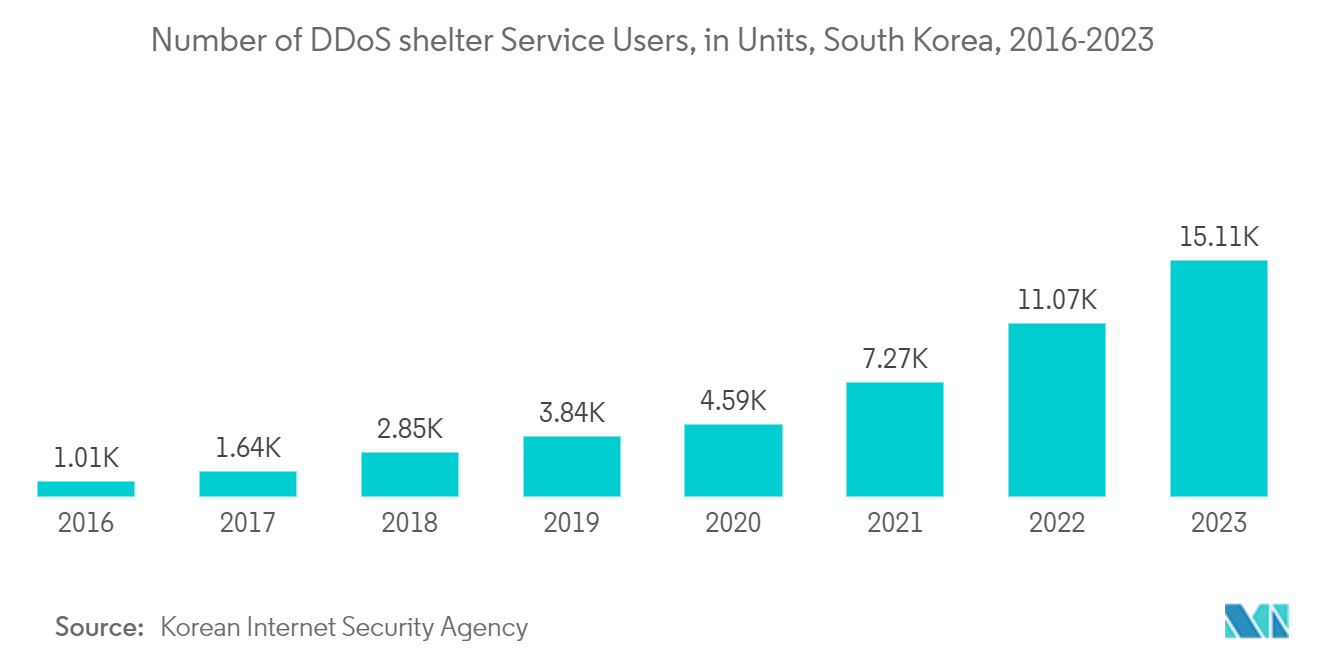
Competitive Landscape
The South Korean Data Center Networking market exhibits significant consolidation. Leading players employ diverse strategies like mergers and acquisitions (M&A), collaborations, and partnerships. This dynamic landscape fosters intense competition among enterprises. Key industry participants include Cisco Systems Inc. and Arista Networks Inc., among others.
In March 2023, Arista Networks unveiled the Arista WAN Routing System, a comprehensive integration of three innovative networking solutions. This system combines enterprise-class routing platforms, carrier/cloud-neutral internet transit capabilities, and the CloudVision Pathfinder Service. The aim is to streamline and enhance customer-wide area networks, simplifying their management and improving overall performance.
South Korea Data Center Networking Industry Leaders
-
Cisco Systems Inc.
-
Arista Networks Inc.
-
Juniper Networks Inc.
-
Huawei Technologies Co. Ltd.
-
VMware Inc.
- *Disclaimer: Major Players sorted in no particular order
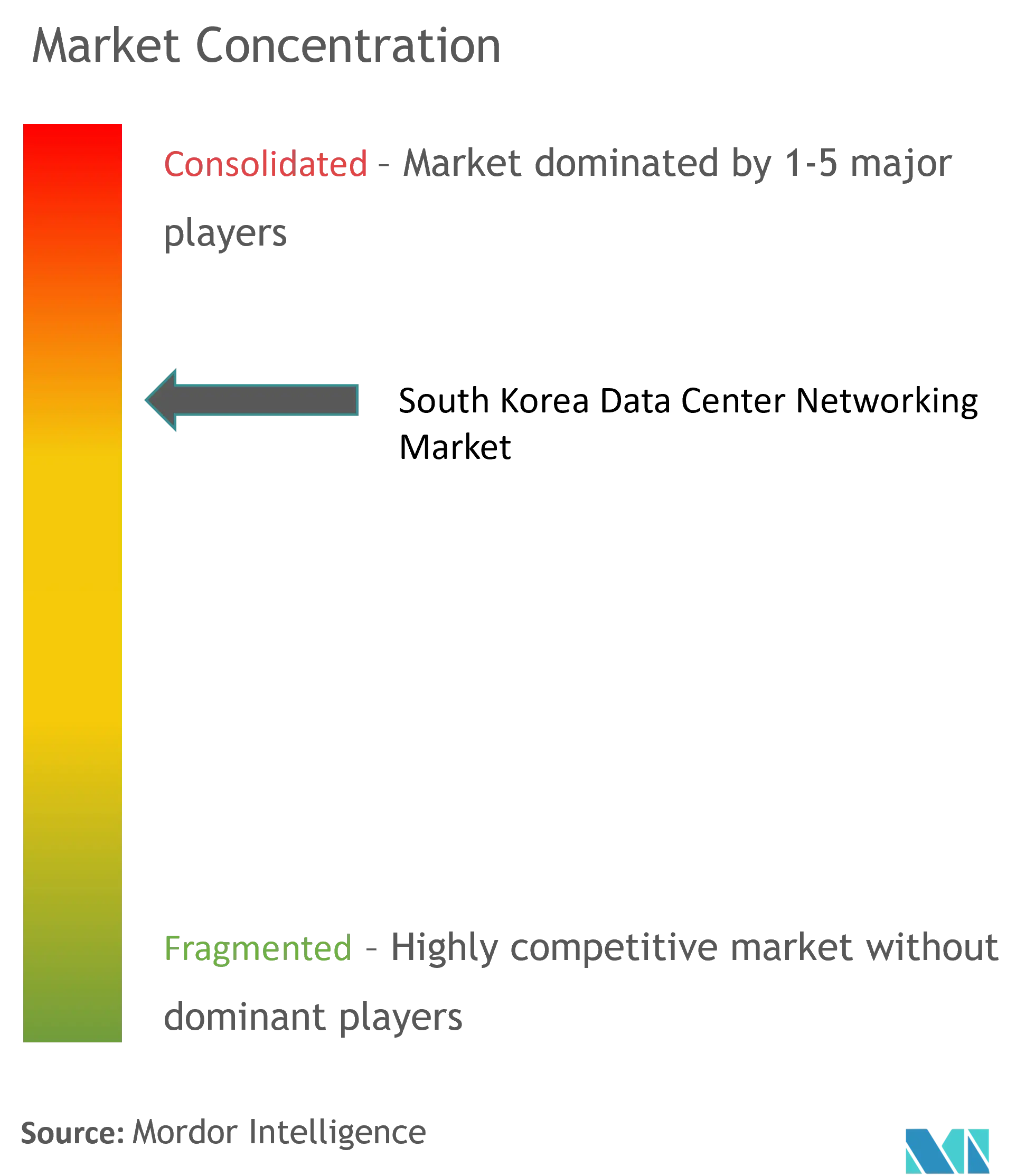
Recent Industry Developments
- July 2023: Broadcom Corporation revealed a groundbreaking development for enterprise data centers- Broadcom Trident 4-X7 Ethernet switch ASIC. This 4.0 Terabits/second fully programmable switch is custom-made for Top of Rack (ToR) boxes, catering to their specific demands.
- June 2023: Cisco Inc. announced its vision for Cisco Networking Cloud, an integrated management platform experience for both on-prem and cloud operating models. The new innovations include SSO, API key exchange/repository, sustainable data center networking solutions and expanded network assurance with Cisco ThousandEyes.
South Korea Data Center Networking Market Report Scope
Data center networking refers to the set of technologies, protocols, and hardware used to connect physical and network-based devices and manage the network infrastructure, storage, and processing of applications and data. Data center networking is very critical for 100% uptime of data centers. In the current web-connected world, business workloads are executed on single computers, hence leading to the need for data center networking. Networks provide servers, clients, applications, and middleware with a standard plan to stage the execution of workloads and also to manage access to the data produced.
The South Korean data center networking market is segmented by product (ethernet switches, routers, storage area network (SAN), application delivery controllers (ADC), and other networking equipment), by services (installation & integration, training & consulting, and support & maintenance), and by end-user (IT & telecommunication, BFSI, government, media & entertainment, and other end users).
The market sizes and forecasts are provided in terms of value (USD) for all the above segments.
| By Product | Ethernet Switches |
| Routers | |
| Storage Area Network (SAN) | |
| Application Delivery Controller (ADC) | |
| Other Networking Equipment | |
| By Services | Installation & Integration |
| Training & Consulting | |
| Support & Maintenance |
| IT & Telecommunication |
| BFSI |
| Government |
| Media & Entertainment |
| Other End-Users |
| By Component | By Product | Ethernet Switches |
| Routers | ||
| Storage Area Network (SAN) | ||
| Application Delivery Controller (ADC) | ||
| Other Networking Equipment | ||
| By Services | Installation & Integration | |
| Training & Consulting | ||
| Support & Maintenance | ||
| End-User | IT & Telecommunication | |
| BFSI | ||
| Government | ||
| Media & Entertainment | ||
| Other End-Users | ||
Key Questions Answered in the Report
How big is the South Korea Data Center Networking Market?
The South Korea Data Center Networking Market size is expected to reach USD 0.59 billion in 2025 and grow at a CAGR of 13.80% to reach USD 1.13 billion by 2030.
What is the current South Korea Data Center Networking Market size?
In 2025, the South Korea Data Center Networking Market size is expected to reach USD 0.59 billion.
Who are the key players in South Korea Data Center Networking Market?
Cisco Systems Inc., Arista Networks Inc., Juniper Networks Inc., Huawei Technologies Co. Ltd. and VMware Inc. are the major companies operating in the South Korea Data Center Networking Market.
What years does this South Korea Data Center Networking Market cover, and what was the market size in 2024?
In 2024, the South Korea Data Center Networking Market size was estimated at USD 0.51 billion. The report covers the South Korea Data Center Networking Market historical market size for years: 2019, 2020, 2021, 2022, 2023 and 2024. The report also forecasts the South Korea Data Center Networking Market size for years: 2025, 2026, 2027, 2028, 2029 and 2030.
Page last updated on:
South Korea Data Center Networking Market Report
Statistics for the 2025 South Korea Data Center Networking market share, size and revenue growth rate, created by Mordor Intelligence™ Industry Reports. South Korea Data Center Networking analysis includes a market forecast outlook for 2025 to 2030 and historical overview. Get a sample of this industry analysis as a free report PDF download.
